Those who enter the Galleria Estense in Modena usually cannot help but pause rather long in front of a masterpiece by Gian Lorenzo Bernini, the Portrait of Francesco I d’Este, who was duke of Modena from 1629 until the year of his death, 1658. Bernini, in making his bust, one of the most intense and eventful Baroque portraits, a kind of symbol of his century, relied on paintings by Justus Suttermans (Antwerp, 1597 - Florence, 1681) and Jean Boulanger (Troyes, 1606 - Modena, 1660) that had been specially delivered to him from the Este capital. Having never seen Francis I in person, Bernini had to focus not so much on the verisimilitude of the subject as on details and movement: what had turned out to be a limitation would eventually become a strength of the work, as it forced Bernini to emphasize those elements that make the bust of Francis I one of the greatest masterpieces of his time (“for the first time,” scholar Alessandro Angelini has written, “the broad cloak that covers over the shoulders the armor of Francis I, is made as if to levitate in the air, rendering of a truly sumptuous elegance the parts of the shoulders and chest, which already in the previous portraits had been widening and swelling with folds”). And for this portrait, Bernini was paid the incredible sum of three thousand scudi: the same he had received from Pope Innocent X for the Fountain of Fumes in Piazza Navona.
The episode is useful for understanding the cultural climate that hovered at the court of Francis I and that has been partly evoked on the occasion of the exhibition Corrispondenze barocche (at the BPER Banca Gallery in Modena, from May 7 to August 22, 2021, curated by Lucia Peruzzi), a review that brought together the best of seventeenth-century Modena present in the collections of BPER Banca and the Civic Museums of Modena to highlight the fecundity and extremely high quality of the painting that flourished in the Este city in the seventeenth century. A flowering that, in the middle years of the century, owed much to Francis I’s interest in the arts and letters. The art historian Corrado Padovani, in his unfinished publication on Ferrarese art, later given to print by his sons under the title La critica d’arte e la pittura ferrarese in 1954, said that Francis I’s enthusiasm for art was reawakened after his trip to Spain, made between the summer and autumn of 1638: in Madrid, the duke, in contact with the wonders of the Royal Palace, commissioned a portrait of himself from Diego Velázquez (it too is now at the Estense Gallery), and above all he was fascinated by what he saw, so much so, Padovani says, that the magnificence of the Este art collections in Modena reached its peak precisely with the young ruler.
“It was Francis I,” writes Lucia Peruzzi, “who had raised Modena to the status of a splendid seat of court, capable of standing out on the Baroque stage of the time for the magnificence of the residences and the prestige of the darte collections, for musical and theatrical life. From the very beginning of his duchy he undertook the construction of new buildings; in addition to the Ducal Palace in Modena he also entrusted Bartolomeo Avanzini, with the contribution of the court stage designer Gaspare Vigarani, with the splendid residence in Sassuolo.” Francis I, moreover, went to great pains to expand the Modena collections: from the very beginning of his reign he had worked to arrange the works of art coming from Ferrara, the former Este capital that had passed to the Papal States with the Devolution of 1597, and after his trip to Spain he worked to ensure that the collection gained considerable international scope. Francis I began acquiring works of art and also taking them from churches in the territory (partly through the advice of the painter Gabriele Balestrieri, who joined him in this frenetic activity): paintings by Titian, Paolo Veronese, Giulio Romano, Correggio, Cima da Conegliano and other great painters arrived in Modena. Also, luxurious tapestries, works of silverware and goldsmithing, precious ceramics. But that’s not all: Francis I also surrounded himself with the most admirable artists of Emilia of the time.
 |
| Gian Lorenzo Bernini, Bust of Francesco I d’Este (1651; marble, 98 x 106 x 50 cm; Modena, Galleria Estense, inv. 565). Work not in exhibition |
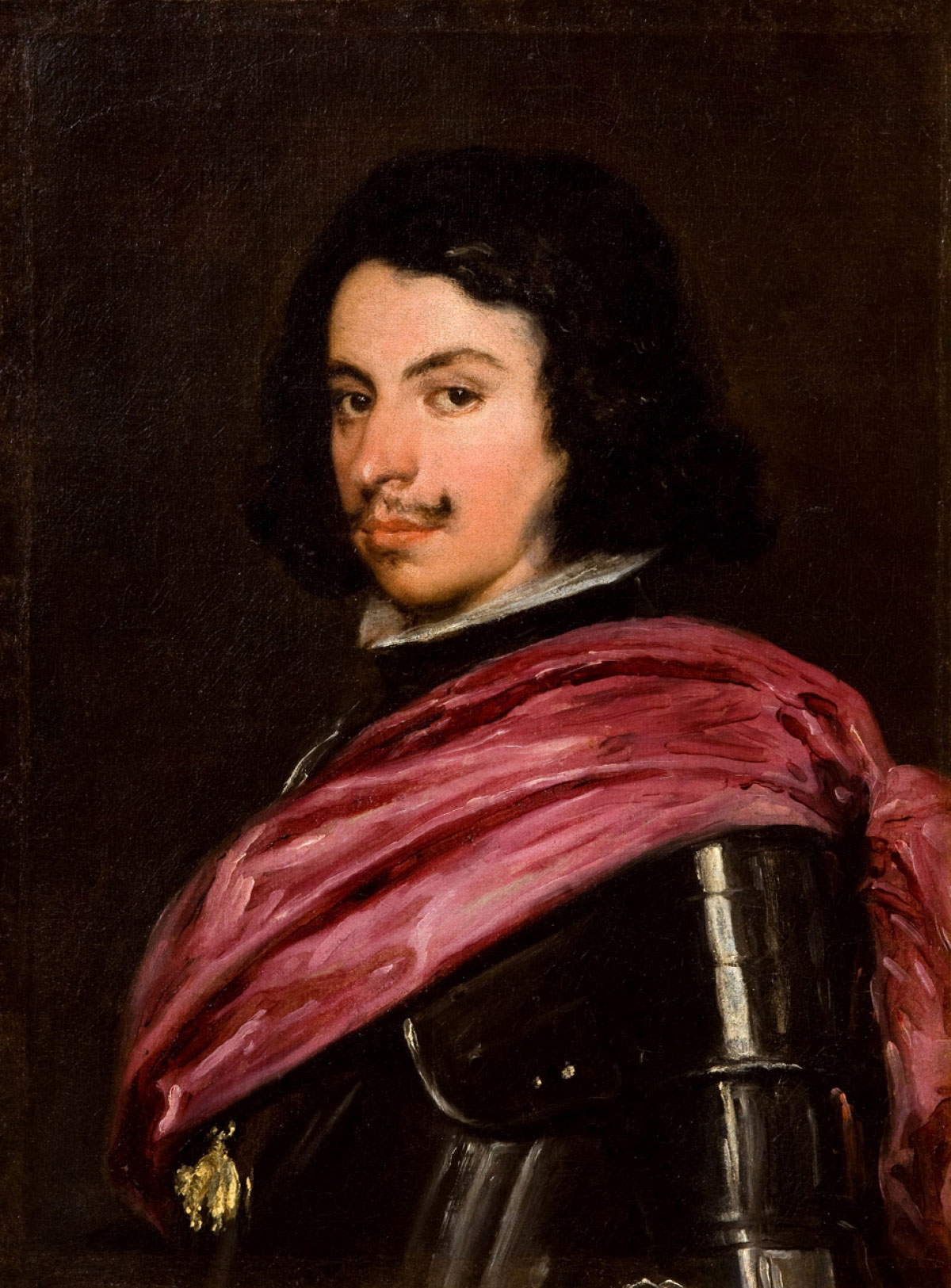 |
| Diego Velázquez, Portrait of Francesco I d’Este (1638-1639; oil on canvas, 68 x 51 cm; Modena, Galleria Estense, inv. 472). Work not on display |
 |
| The exhibition Baroque Correspondences, installation. Photo by Ernesto Tuliozi, Avenida |
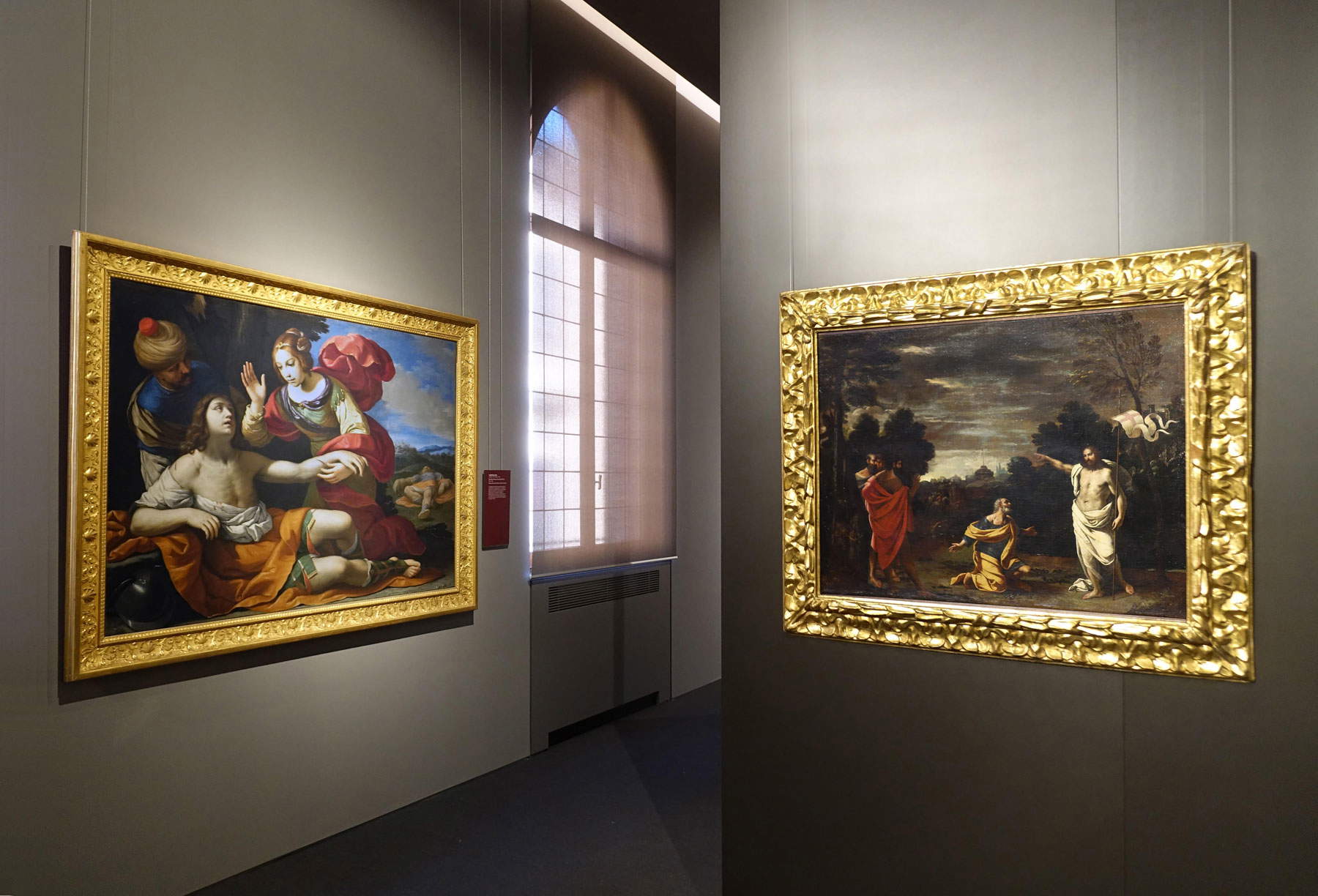 |
| The exhibition Baroque Correspondences, installation. Photo by Ernesto Tuliozi, Avenida |
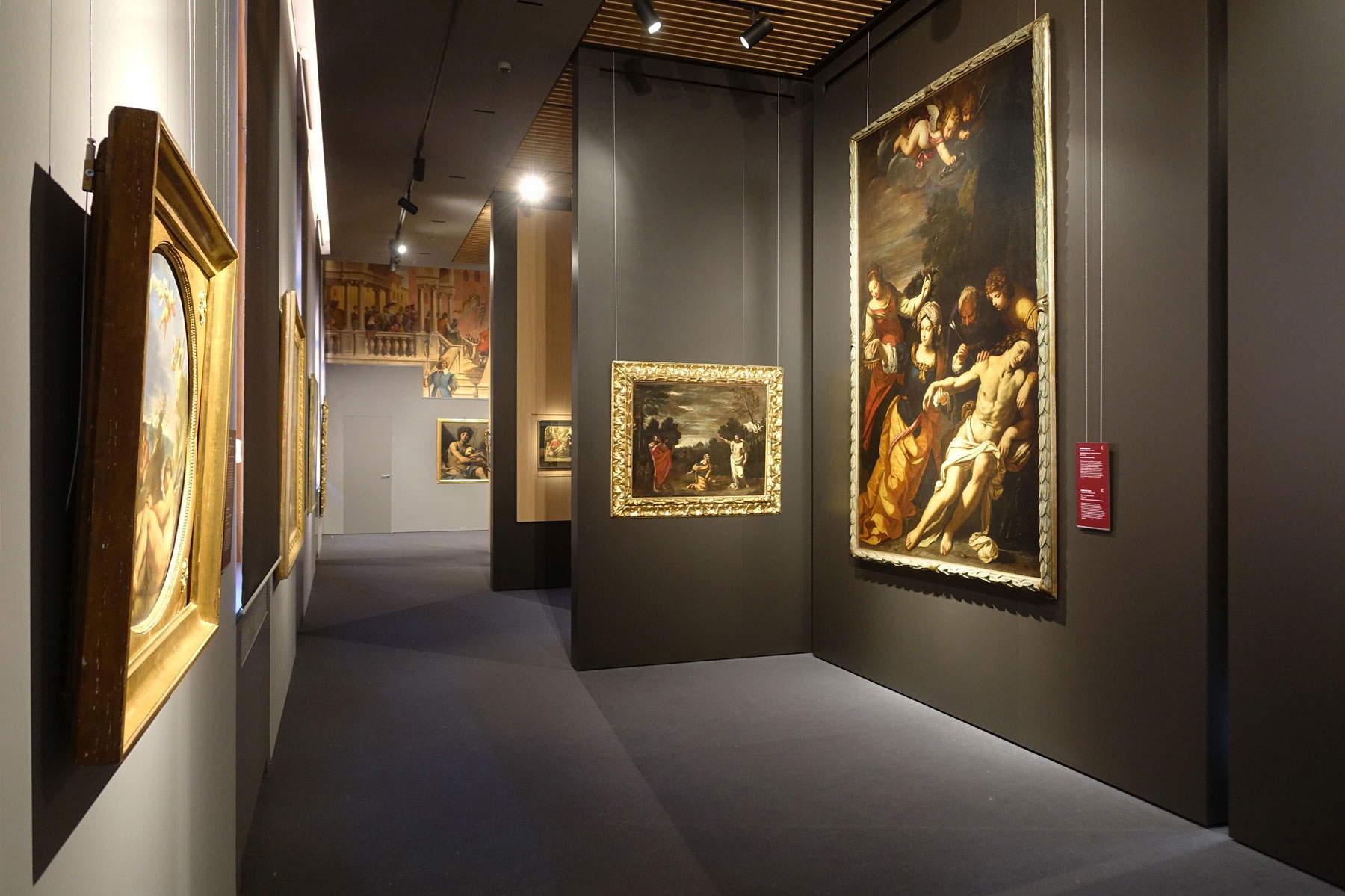 |
| The exhibition Baroque Correspondences, staging. Photo by Ernesto Tuliozi, Avenida |
The first of the artists to mark a profound change in the fortunes of Modenese painting of the time was Ferrara-born Ludovico Lana (Codigoro, 1597 - Modena, 1646), an artist capable of proposing a painting founded at once on the natural and the courtly. With Lana, Peruzzi writes again, “Modena achieves a true linguistic structure, as complex and cultured in stylistic emulsion as it is ’loving’ in pathetic inflection, capable of coping with the new pretensions of a capital city, of which the painter himself deluded himself for some time that he could become the official referent.” The unfortunate artist, in fact, passed away too prematurely to better reap the fruits of his labor. Ludovico Lana had trained on Scarsellino ’s painting in Ferrara, as is evident from the painting Domine, quo vadis? in the Museo Civico in Modena, a work with earthy tones, typical of Ippolito Scarsella’s art (just as imprinted on the style of Scarsellino and other painters active in and around Ferrara, such as Carlo Bononi and the young Guercino, is the somber intonation), which tells of the vision of Christ had by St. Peter, persecuted in Rome, according to some apocryphal texts. Although it is a work from the first phase of his activity, it already reveals some of the manners that would be characteristic of his later production: see, for example, the attitude of the figures, caught in solemn poses, almost of classical statuary (this is especially true of Christ). Lana had in fact long looked to the ways of Guido Reni, adhering progressively to them to arrive around the mid-1930s, Peruzzi explains, “at those results of courtly elegance and composure that flanked him with the choices of moderate classicism expressed by the court and implemented by the architect Bartolomeo Avanzini.”
Lana was, in short, an artist who embodied the cultured and elevated ideals of Francis I’s court. This is well demonstrated by a further painting, Erminia Finds Wounded Tancredi, which illustrates an episode from Torquato Tasso’s Gerusalemme Liberata, a poem particularly dear to the Este court (consider that, between 1639 and 1640, Francis I commissioned a then very young Salvator Rosa to paint a landscape with the episode of Erminia carving Tancredi’s name on the tree, now at the Ducal Palace in Sassuolo). It is one of Ludovico Lana’s greatest masterpieces, still this way from the classicism of Reno that would distinguish his more mature production, but strongly influenced by the painting of Guercino, after having abandoned his interest in the straightforward naturalism of his beginnings. And here, the artist produces a “very careful direction of gestures and luminous effects” (so Lucia Peruzzi) that, however, ties in well with the sentimental accents of the story.
BPER Banca also owns an important work that biographer Girolamo Baruffaldi mentions among the works Lana executed precisely for the Ducal Palace in Sassuolo, namely a large Saint Sebastian cared for by Irene over two and a half meters in height: “conservasi nel ducale palagio di Sassuolo,” Baruffaldi writes in his Vite de’ pittori e scultori ferraresi, “un quadro sopra del quale dordine del duca Francesco I colorì gli sponsali di Bradamante e Ruggiero alla presenza dellimperatore Carlo Magno e di molti paladini di Francia cavandone la storia dal Furioso [...]. With such occasion for the ornament of said palace he painted a wounded St. Sebastian, and medicated by some pitiful women, and another tied to a tree in a different pose.” The BPER Banca canvas, writes the curator of Baroque Correspondences, “constitutes an extraordinary testimony to the idealistic goal of the Reno style that characterizes the painter’s mature production,” in which one can admire a “very calibrated balance between cultured classical rhetoric and delicate rendering of the affections.” It is a work from the late phase of Ludovico Lana’s activity, in which his adherence to the Reni manner is now uncovered, but it is also a singular painting because of the fact that a sacred theme is approached by the Ferrara painter as if it were a profane subject. The artist, in other words, focuses on the refinement of the poses, the elegance of the clothing, and the sentimentality we derive from the expressions. Particularly admirable is the detail of the elderly man against the light bending down to medicate the arm of a suffering Saint Sebastian, characterized, moreover, by an Apollonian and sensual body, also reminiscent of certain Rhenish solutions. In short, the format is that of an altarpiece, but the tones are those of a room painting intended for a court setting.
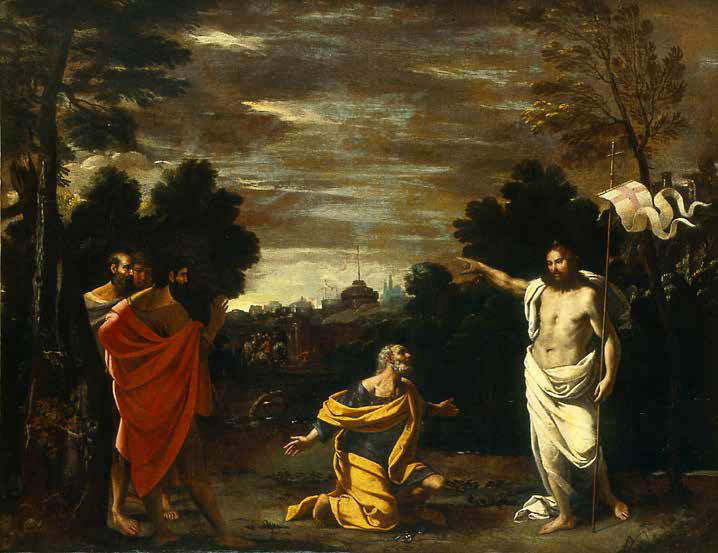 |
| Ludovico Lana, Domine, quo vadis? (oil on canvas, 79 x 104; cm Modena, Museo Civico dArte, inv. 36) |
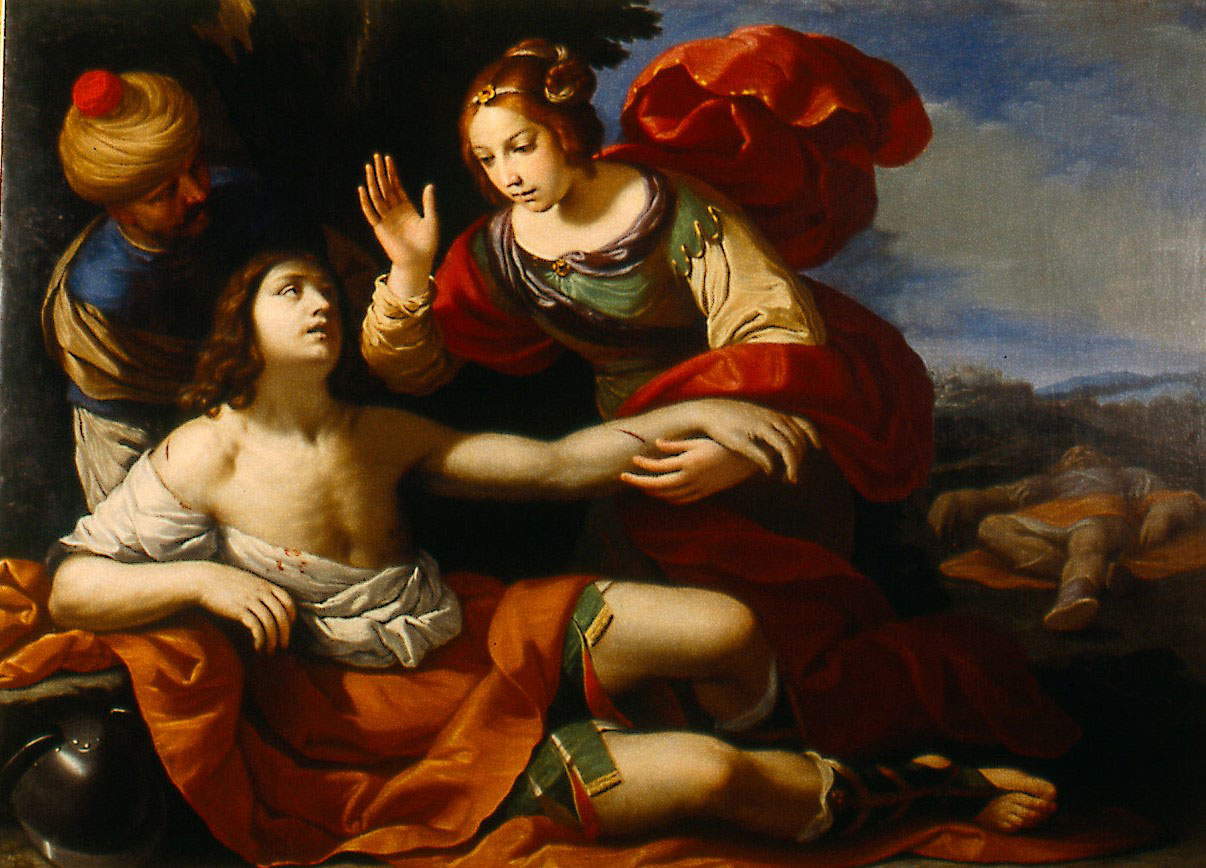 |
| Ludovico Lana, Erminia finds wounded Tancredi (oil on canvas, 120 x 167 cm; Modena, Museo Civico dArte, inv. 37) |
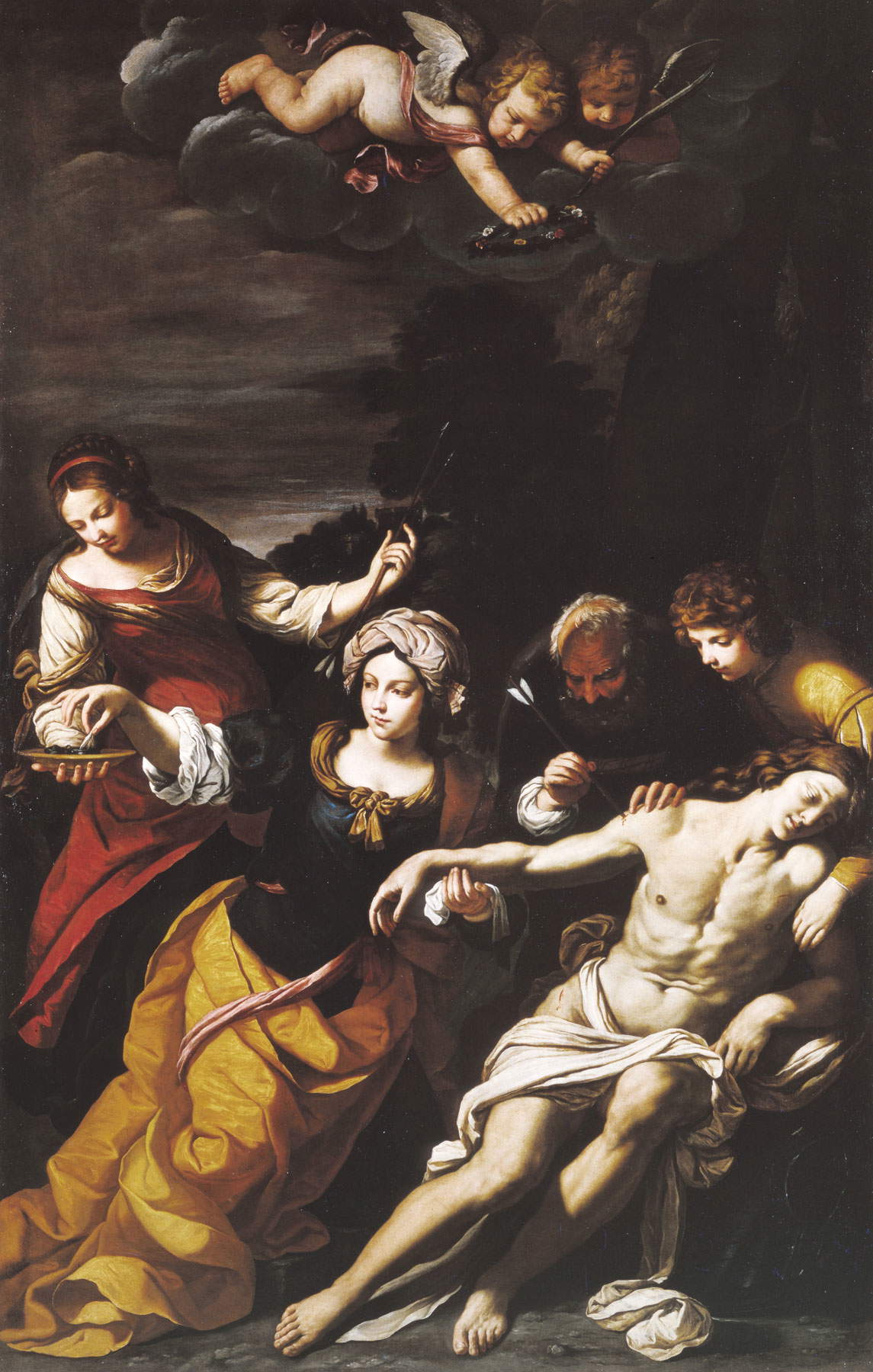 |
| Ludovico Lana, Saint Sebastian Cured by Irene (oil on canvas, 268 x 172 cm; Modena, BPER Banca Collection) |
A kind of alter ego of Ludovico Lana, on the other hand, is the aforementioned Frenchman Jean Boulanger: if the development of Lana’s art is always coherent and linear, in contrast Boulanger’s painting is a kind of hymn to versatility. In 2003 a major monographic exhibition was dedicated to Ludovico Lana in Modena, Md: there, Daniele Benati and Lucia Peruzzi remarked how Lana had attained at the Este court “aristocratic and solitary positions that would make him somewhat of a loser, when the entrepreneurial spirit and ability to coordinate a team effort of Jean Boulanger, more fantastic and capricious in the reworking of his many figurative referents, would impose in Modena an operational model fully coinciding with the ideals pursued by Francis I.” And again, in an article that appeared in 1920 in the historic magazine Emporium, in which the works of the Congregazione di Carità in Modena were presented, journalist Giovanni Nascimbeni described Boulanger as a “brilliant French painter” who “knew how to unite in his art the grace and elegance of line proper to the artists of his homeland with the efficacy of color and the strength of conception proper to his Italian master,” namely Guido Reni.
Nascimbeni’s idea becomes clear when observing Clio, muse of the History of the BPER Bank Collection. The muse is depicted by Boulanger as a young woman absorbed in her thoughts with a vaguely melancholy gaze, crowned with laurel, classically dressed in a pink tunic and a blue robe, while holding a trumpet in her right hand and a book in her left. Boulanger derives some elements from Cesare Ripa’sIconologia, in the 1611 edition, the one in which the illustration of the story first appears, depicted as a woman looking backward (i.e., to the past) and depicted in the act of writing a book (thus fixing on paper the events that occurred along the story). Boulanger adds to her the attribute of the trumpet, since Clio was also considered the muse of fame: this was a figuration entirely functional to the propagandistic celebration of Francis I, given the role history was given to better present the image of the duke. The young girl is animated by a delicate Rhenish classicism that perfectly matched the tastes of the Estense court and those of Francis I: “the maiden,” writes Peruzzi, “refers back to the heroines of the Camera dellAmore, made in 1640, that is, in the first phase of the work, when Boulanger’s Rhenish training was still filtered through the Mannerist verve of his culture of origin.”
Boulanger had in fact been called by Francis I in 1636 to attend to an undertaking from which Lana, as far as we know, had been excluded, namely, the decoration of the Ducal Palace in Sassuolo: evidently, the Frenchman, though no less gifted artistically than Lana, was more skilled and experienced in directing a building site than the latter. A singular painting in the Civic Museums of Modena, depicting Two Putti Playing with an Eagle, a work returned to Boulanger by Daniele Benati (it was previously attributed to Gaetano Gandolfi instead), can be traced to the manner of this enterprise. The types of putti are identical to those that appear in the decorations of the Ducal Palace in Sassuolo: this is the main clue that led to assign the painting with conviction to the Lorraine artist. And it is a painting that demonstrates the artist’s great versatility, however few of his easel works are known to us, although Boulanger must have been particularly active in this area. It is a playful allegory of the Este household (the eagle is the symbol of the Este), where “the pastiness of the drafting,” as Benati writes referring to the fluffy clouds on which the putti play, their hair and the ribbons with which they play, “the glossy chromatic range (the bright reds and whites that are printed against the clear blue of the sky) and again the elegant treatment of the forms” suggest this is an early work by Boulanger, where still the Rhenish component is reinterpreted through the filters of the squillant colors typical of the Mannerist culture beyond the Alps. Of a very different outcome would have been the paintings of which Boulanger was capable after the mid-1640s, upon his return from his stay in Rome in 1644-1646.
Finally, another work deserving of mention that is affected by the cultural temperament of the Modena of Francis I, namely the Madonna of the Rose by Michele Desubleo (Michel Desoubleay; Maubege, 1602 - Parma, 1676), a Flemish painter who moved in his early twenties to Rome and then moved in the early 1930s to Bologna, where he became part of Guido Reni’sentourage, abandoning the naturalism of his origins, inferred from the French Caravaggesque painters he had frequented during his Roman years (and of whom, in BPER Banca’s work, Desubleo is recalled in the splendid still life piece of the basket of flowers, which is nonetheless an example of a taste for floral decorations from which even Modena was not immune), to fit into the groove of Reni’s painting more akin to the orientations of the Estense court. The Reno model is already defined precisely in the Madonna of the Rose, one of the pinnacles of Desubleo’s painting: “the highly chosen compositional harmony and the refined quality of the brushstroke,” Peruzzi explains, "hark back to the early 1950s, when the artist was also active for the Este family and made the Dream of Joseph for the church of Paradisino in Modena and the Saint Francis for the church attached to the Ducal Palace in Sassuolo (1654), commissioned by Duke Francis I himself."
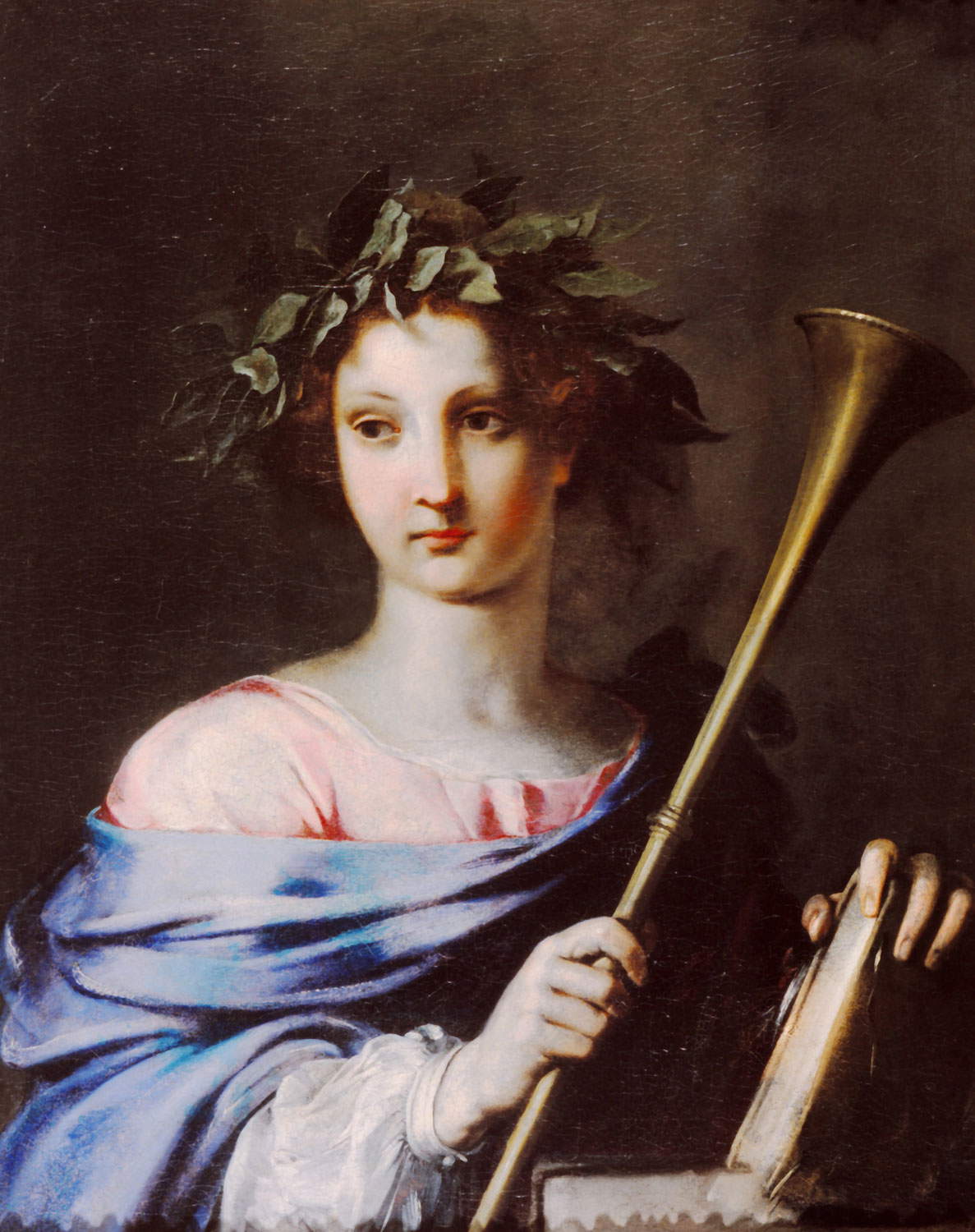 |
| Jean Boulanger, Clio, muse of history (oil on canvas, 84 x 67 cm; Modena, BPER Banca Collection) |
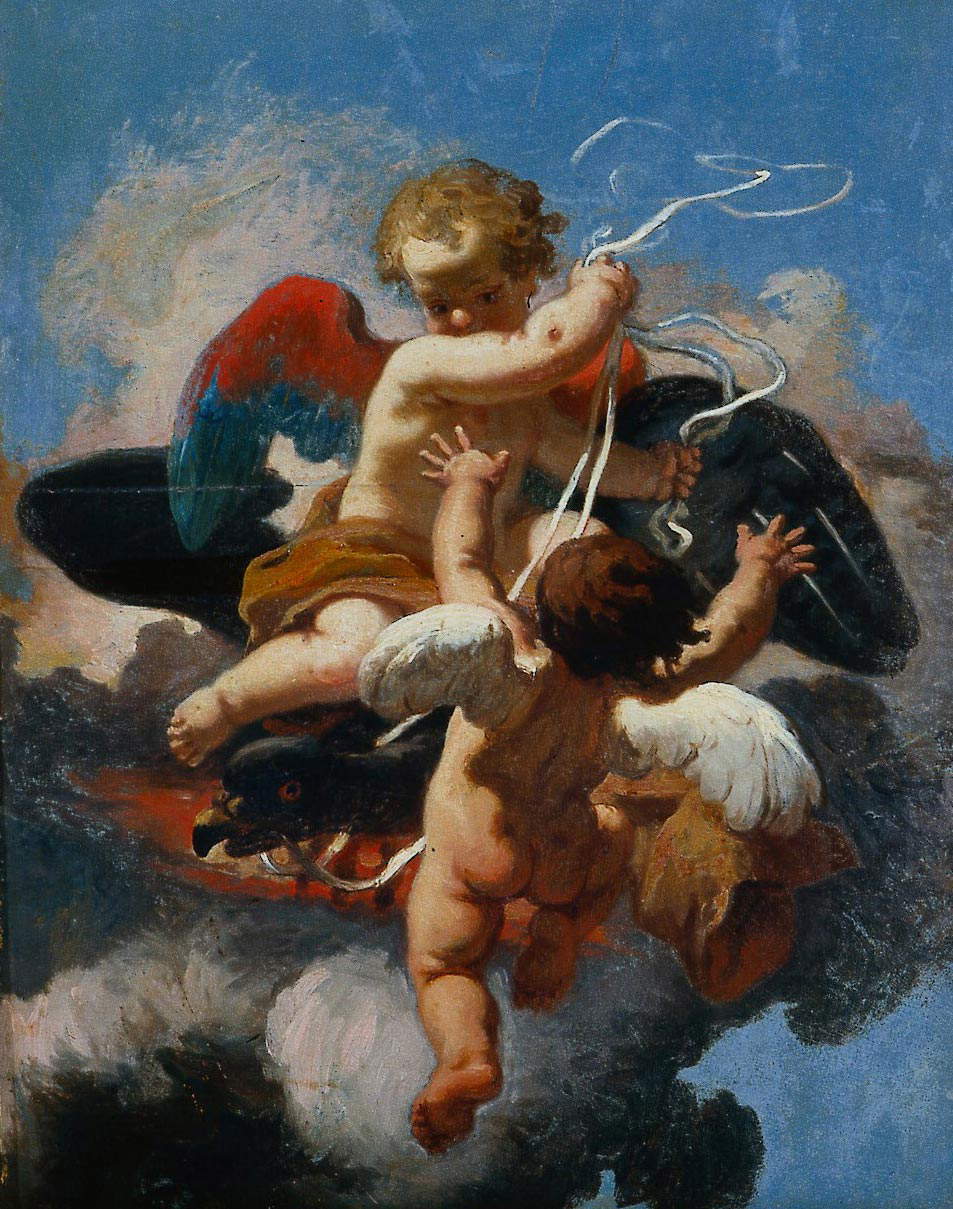 |
| Jean Boulanger, Two Putti Playing with an Eagle (oil on panel, 58 x 39.5 cm; Modena, Museo Civico dArte, inv. 39) |
 |
| Michele Desubleo, The Madonna of the Rose (oil on canvas, 149 x 113 cm; Modena, BPER Banca Collection) |
These were not the only artists who worked for Francis I (although Lana and Boulanger were those closest to him): it will be worth mentioning how the young Guercino also had the opportunity to express his art for the duke of Modena, invited several times to the capital as well as to Reggio Emilia, the second most important city of the duchy where, in the great building site of the Madonna della Ghiara the temple opened for worship as early as 1619, for much of the century the greatest Emilian talents of the time were expressed, including Luca Ferrari, probably the greatest of the “Reggio” painters, able to present himself with an original blend of Emilian naturalism and Neovenetian coloristic accents.
Modena was, in essence, the propelling center of a cultured, classical, elegant and refined taste that fed on the sap guaranteed by the artists who worked according to the Reni manner, which was counterbalanced by the Baroque of Luca Ferrari, who expressed himself, however, far from the capital (which had nevertheless been invested by a wave of enthusiasm for Baroque art especially in the first decades of the seventeenth century). Francis I’s successors, with the exception of the “flare-up” of Alfonso IV, who was a patron of one of the most interesting artists of the last seventeenth century in Modena, namely Francesco Stringa, would not have been able to replicate his splendor, nor would they have devoted to art the very high resources that Francis I reserved for his passion, and that in the duchy’s budget followed only military expenditures (which at the time were everywhere the most important chapter of expenditure). However, for that turn of the year, thanks to purchases and thanks to the artists with whom the duke knew how to surround himself, his gallery had managed to become the most prestigious in Italy.
Warning: the translation into English of the original Italian article was created using automatic tools. We undertake to review all articles, but we do not guarantee the total absence of inaccuracies in the translation due to the program. You can find the original by clicking on the ITA button. If you find any mistake,please contact us.